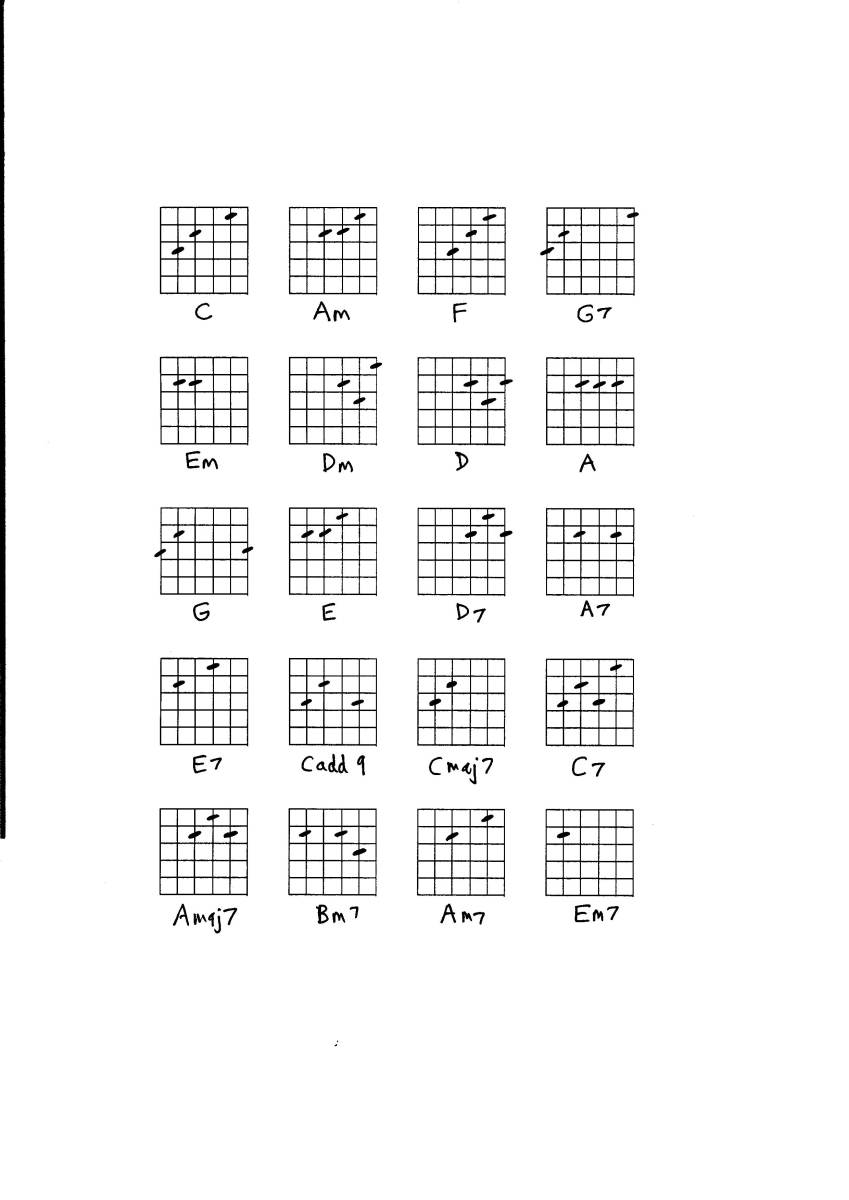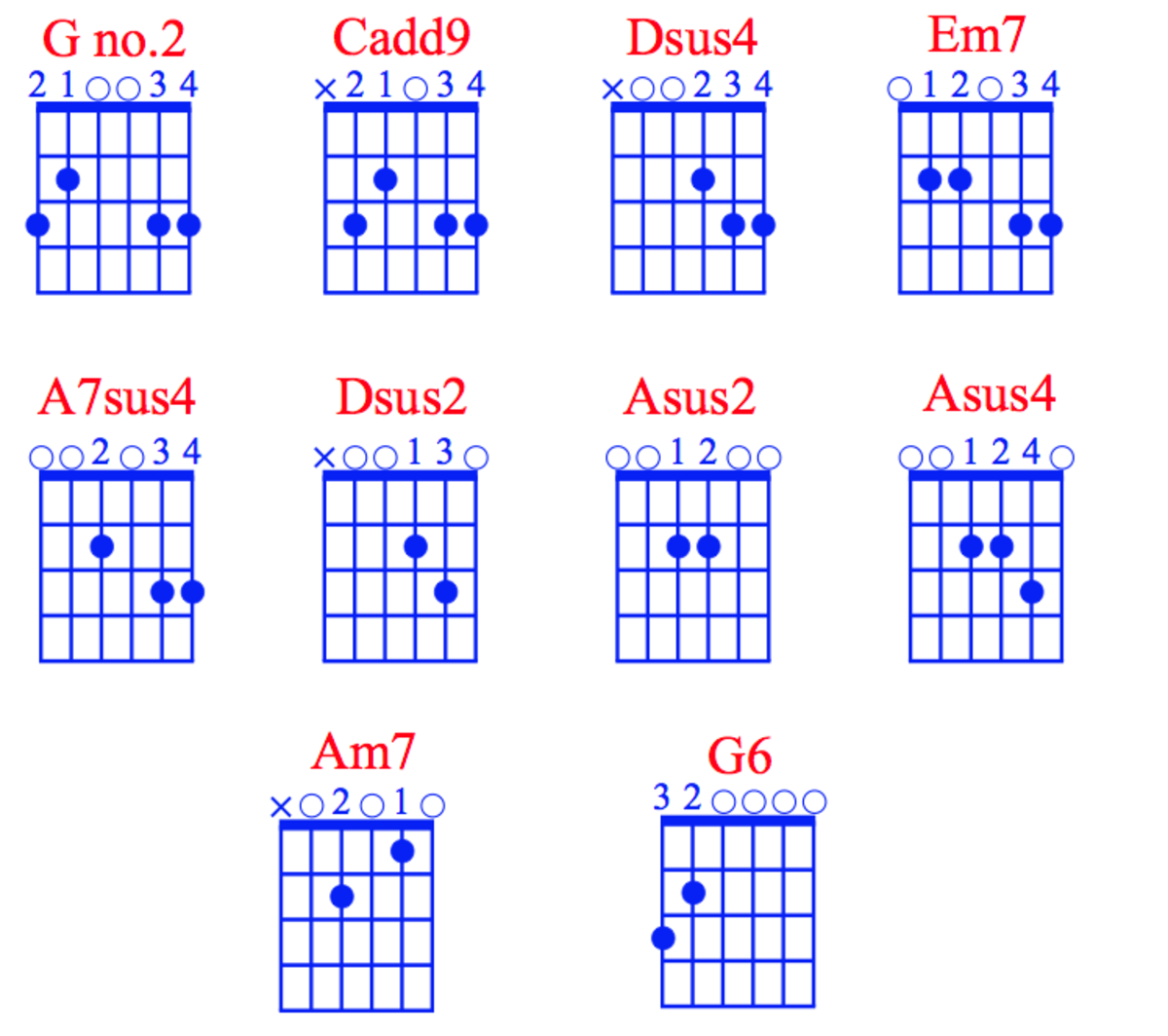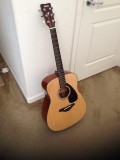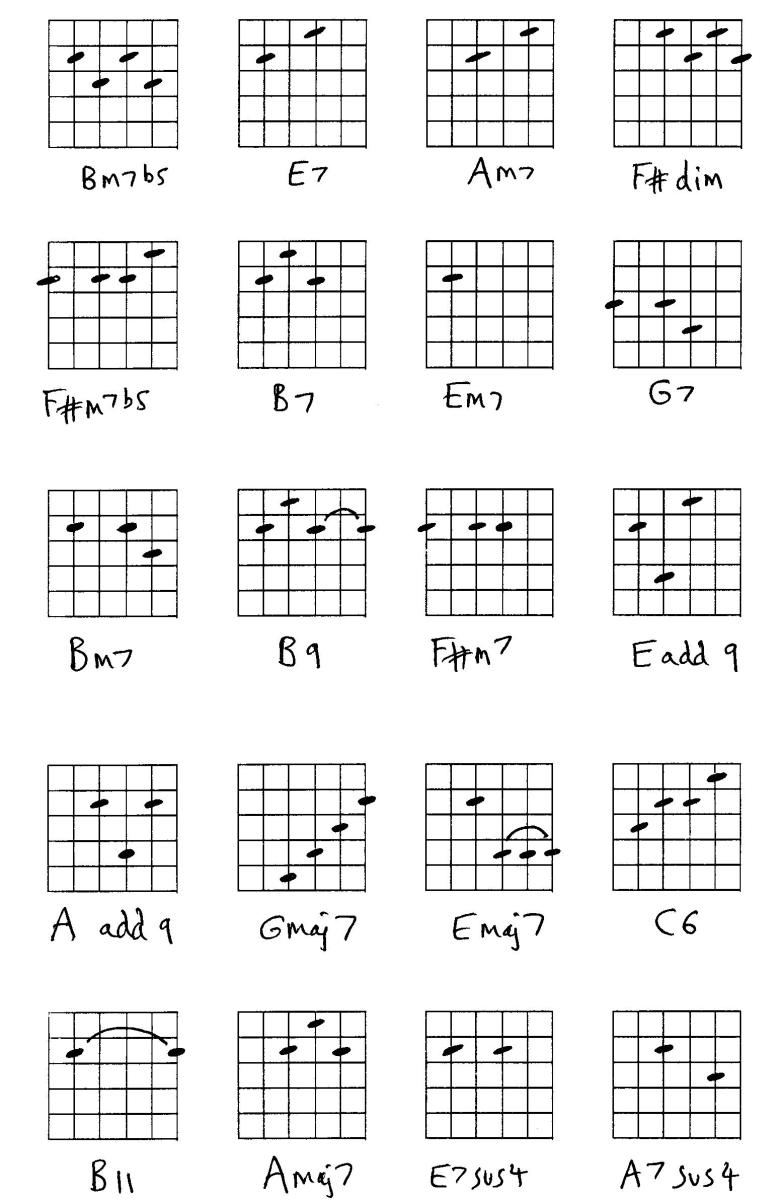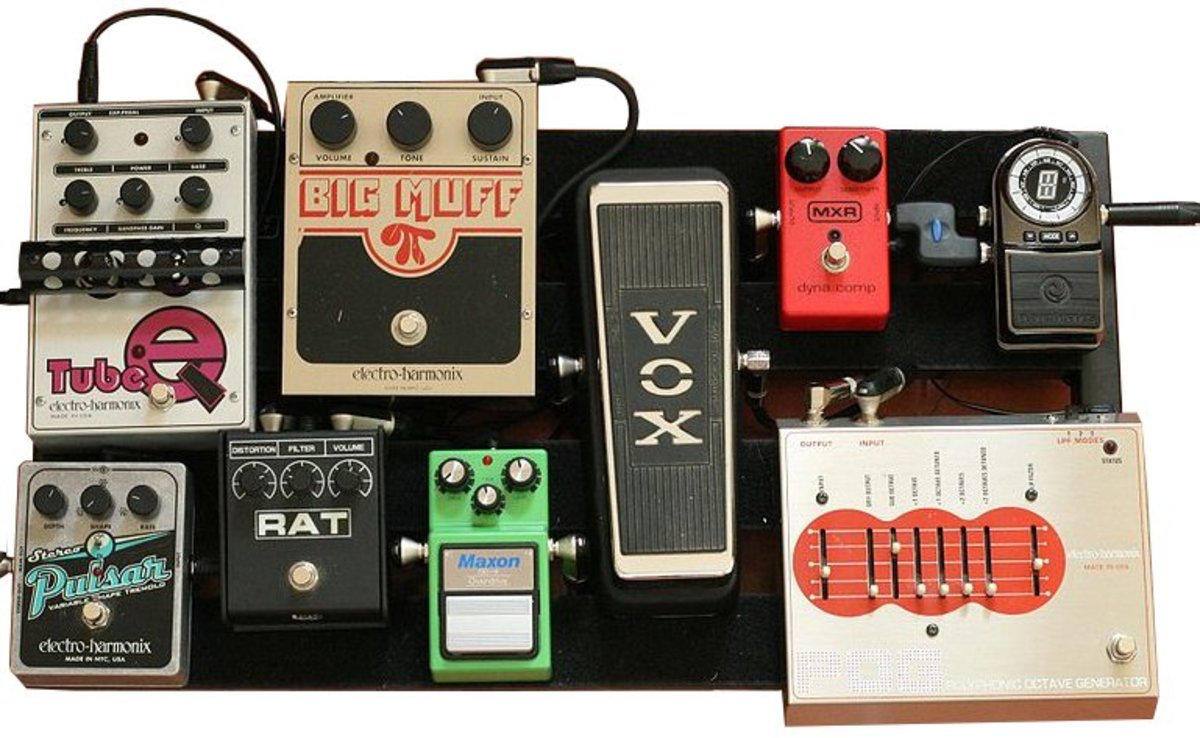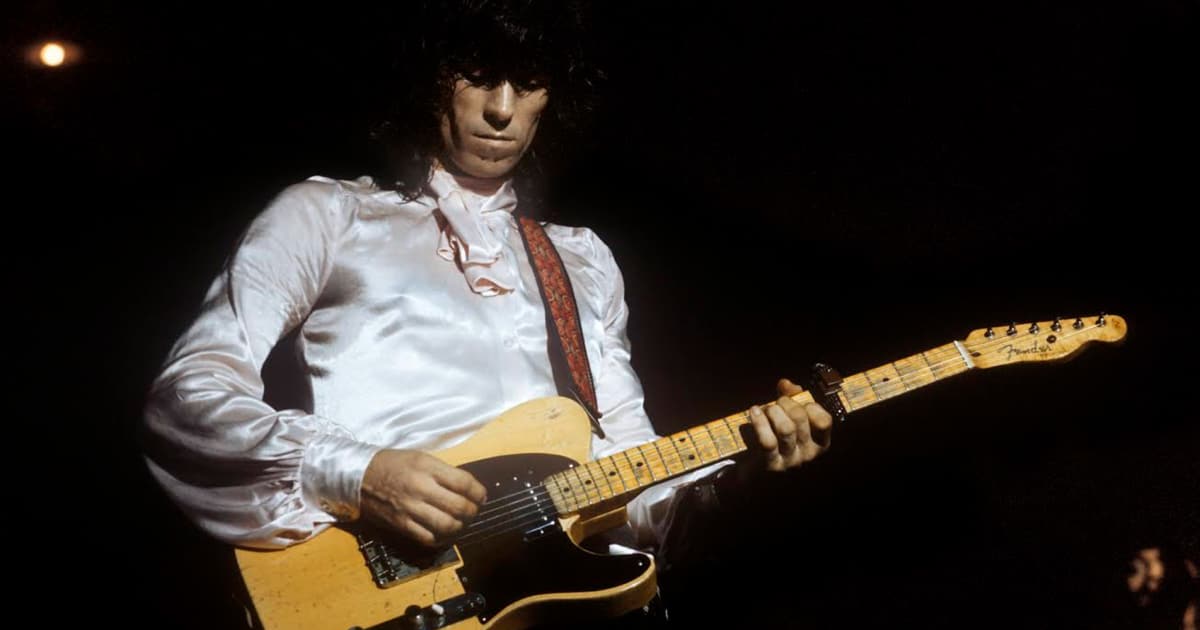Guitar Chords Lesson
Guitar Chords info
The chords given here are designed to be Part 2 of The Guitar Chords 101 hub. I've selected some of the most commonly found and most useful chords, and just made small adaptations to them to make them sound better.
- Chord diagrams shown work like this:
- Six vertical lines are the six strings
- Horizontal lines are the frets
- The headstock is at the top of the diagram
The original chord is shown, then the arrow points to the replacement chord or voicing. Sometimes the new chord is just easier, mostly they sound a lot better with very little effort. Ultimately, you should decide whether they sound right in the context of the song you are playing.
It will always sound better if you have the root note of the chord as it's lowest sounding note. For instance, Am has an open 5th string, and you don't play string 6, because the open 5th is an A note. All the other chords work in the same way, and often strumming chords sounds better if you hit the bass note first, then the rest of the chord.
Another example: The C chord has a C as the lowest note in the chord, fret 3 on string 5. A typical beginner mistake is to play all six strings, resulting in mud!
Guitar Chords - improving basic chords
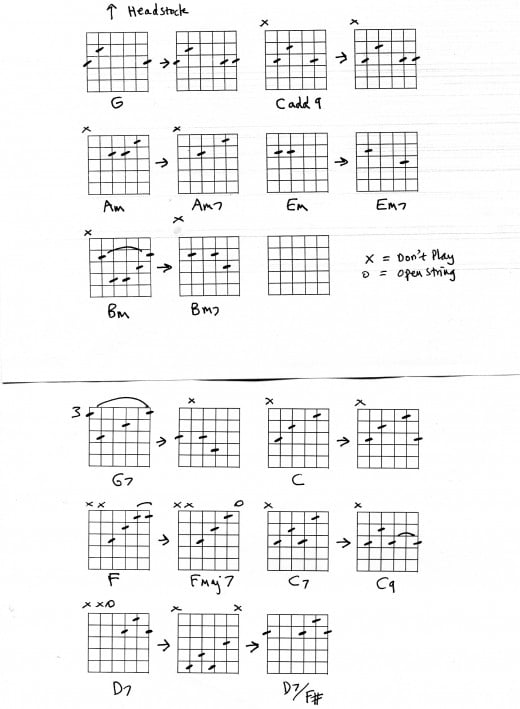
G7 example
The barre chord G7 can be replaced with a three-note version that is much easier to use, and works very well in a band or jazz situation. Move this shape up 2 frets for A7, up another 2 for B7, up another 1 for C7 - so you are now starting in fret 8. By simply moving across one string, you now have a great way of playing any minor 7 (m7) chord. The middle note is muted, or you can fingerpick instead.
If I wanted to pick one thing that would improve your guitar playing, this would be it. Using this three-note chord voicing you can slide into a chord, apply vibrato, and make all the chord changes much faster. It will also improve the sound of your chords, because now you are only hearing the important notes.
Let's just recap this: one three note voicing that enables you to play any 7th chord, with the root note on string 6, or any m7 (minor 7) chord, with the root note on string 5. Of all the chord shapes, this is the one I use most, and it's especially useful for blues and jazz.
D7 example
The beginner-shape D7 can be replaced with the middle strings voicing shown, which is very useful. In first position it would be a C7 chord shape, just keep moving it up the fretboard to get all eleven 7th chords - the name comes from the note on string 5, or the root note. Buy one, get 11 free!
Again, this is a moveable shape, with the root note of the chord now on string 5 - move up 2 frets for an E7 for example. If you don't know the note names on strings 5 and 6, now would be a good time!
Also adding an F sharp bass note with your thumb round the neck can fill out the sound of the chord, giving you a D/F sharp chord.
C7 example
C7 can be replaced by C9, a more complex and jazz sounding chord. Flatten your third finger over the top strings. Again, a moveable shape.
Up 2 frets= D9, up another 2= E9.
Am, Em, Bm
These three chords are all from the harmonised scale in the key of G: The major chords are G, C, D7. The minor chords are Am, Bm, Em.
So you can use these chords together, and the added 7th gives the chord more ring and more character. A safe rule of thumb is that a minor chord can always be replaced by a minor 7th chord, and it will generally sound better.
The dreaded Bm Chord
Bm is a barre chord that is a problem for many beginners (see line 3) There are two ways round this, one is to play just the strings 1,2,3,4 - which gives you an OK sounding chord, but with no bass note. The other way is to play the chord I've suggested, playing just the middle 4 strings. This will usually sound good, and it's also quicker to get to this shape.
You can move this shape up the neck as long as you mute the 4th string, which is really useful. As it's a root 5 chord (root note is on string 5) you can play any minor chord if you know the note names on string 5. Here are some of them - the complete sequence is in the table below.
In fret 3: Cm
Fret 4: C♯ minor
Fret 5: Dm
Fret 7: Em
C chord
All we've done here is add a high G to the chord. The C chord is only the notes C, E, G but on guitar we are usually doubling up some of the notes. C add9 shown above will often work too, but not always - best in the key of G.
F chord
For beginners, the F chord can be a problem, and it's often accompanied by swearing. Most of the time, F maj7 works just as well, if not better. Give it a try, but just use the high 4 strings.
Notes on String 5 ( A )
Open = A
| Fret 1 is Bb
| Fret 2 = B
|
|---|---|---|
3 = C
| 4 - C♯
| 5 = D
|
6 = D♯
| 7 = E
| 8 = F
|
9 - F♯
| 10 = G
| 11 = G♯
|
12 = A
|

